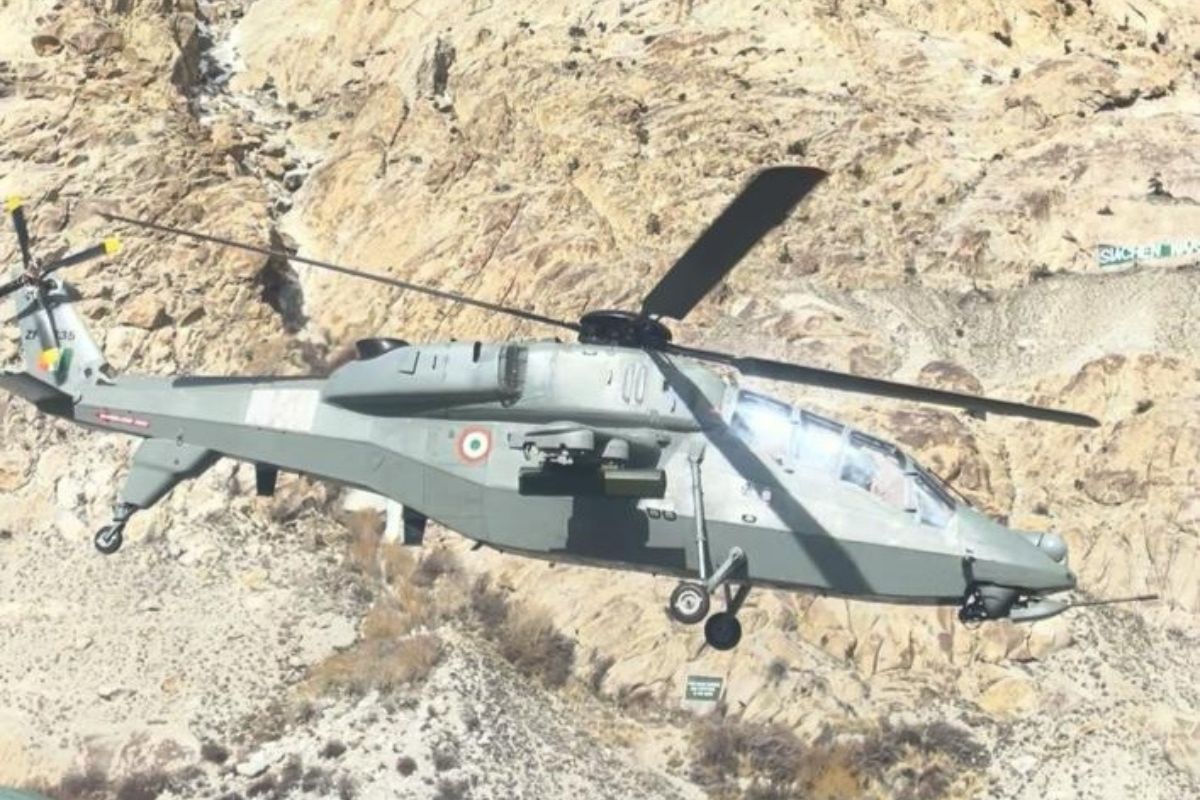Remembering the courage and fortitude of the Indian Army and the Indian Air Force (IAF) displayed four decades ago when Operation Meghdoot was launched to seize control of the world’s highest battlefield Siachen Glacier, rich tributes were on Saturday paid to the bravehearts by the Fire & Fury Corps in Ladakh.
On the occasion of 40th Siachen Day, Indian Army paid rich tributes at the Siachen War Memorial to the Bravehearts who have valiantly guarded the ‘Frozen Frontier’ with courage and fortitude.
The nation will always remain indebted to them and their family members, said the Ladakh based Fire & Fury Corps of the Indian Army.
The IAF posted pictures of Operations at the glacier and also wrote on X; “Saluting the indomitable spirit and bravery of our brethren on this Siachen Day”.
“The Chief of Air Staff (CAS) , Air Chief Marshal VR Chaudhari and all IAF personnel pay our sincere homage to the innumerable sacrifices made over the years in defending our nation’s highest battleground,” the IAF wrote.
“Four decades of operations from the highest battlefield of the world, in extreme climatic conditions, IAF maintains its role as the lifeline of military operations at the Siachen Glacier. Flying over ruthless terrain, chapters of human endurance and technical proficiency continue to be achieved by IAF every day,” IAF added.
Operation Meghdoot was launched on 13 April 1984, when the Indian Army and IAF advanced to the Siachen Glacier to secure the heights dominating the Northern Ladakh region. The operation involved the airlifting of Indian Army soldiers by the IAF and dropping them on the glacial peaks.
Although the operation began in 1984, IAF helicopters were already operating in the Siachen Glacier since 1978, flying the Chetak helicopters which was the first IAF helicopter to land in the Glacier in October 1978.
By 1984, Pakistan’s cartographic aggression in the uncharted territory of Ladakh, allowing foreign mountaineering expeditions in Siachen, was becoming a cause of concern. Having received intelligence inputs about an impending Pakistani military action in the area, India decided to thwart Pakistan’s efforts to legitimize its claim on Siachen. The Indian Army launched Operation Meghdoot, to secure strategic heights on Siachen with the deployment of troops.
Playing an irreplaceable role in this effort, IAF’s tactical and strategic airlifters, An-12s, An-32s and IL-76s transported stores and troops and air-dropped supplies to high altitude airfields, from where Mi-17, Mi-8, Chetak and Cheetah helicopters ferried men and material to dizzying heights on the glacier, far above the limits set by the helicopter manufacturers.
Soon, about 300-odd troops were positioned on the strategically important peaks and passes of the glacier. By the time the Pakistan army reacted by advancing its own troops, the Indian Army was occupying strategically crucial mountain peaks and passes, thereby gaining a tactical advantage.
In extending valuable support to the Army’s fight for maintaining military dominance on this desolate glacier since April 1984, the IAF’s incredible performance at the extremes of temperature and altitude remains a continuing saga of fortitude and skill.
While the initial operations involved only the use of transport and helicopter aircraft transporting men and material, the IAF gradually expanded its role and presence in the region with the deployment of fighter aircraft as well.
The IAF’s Hunter aircraft kick-started fighter operations from the high altitude airfield at Leh, when a detachment of Hunters from No-27 Squadron commenced operations in September 1984. In the next couple of years, the Hunters flew an impressive total of more than 700 sorties from Leh.
As an increasingly large number of fighter sweeps and simulated strikes began to be carried out over the glacier itself, it served as the ultimate morale booster for Indian troops deployed on the glacier, and sent a stern message to the adversary to avoid any misadventures in the area. Later, live armament sorties were carried out at the high altitude firing range at Kar Tso, south of Leh.
With the ground infrastructure becoming more conducive for fighter flying, MiG-23s and MiG-29s also started operating from Leh and Thoise. The IAF also inducted the Cheetal helicopters for operating in the glacier in 2009. The Cheetal is a Cheetah helicopter which is re-engineered with a TM 333 2M2 engine having better reliability and load carrying capability at high altitude.
On 20 August 2013, in a significant show of capability, the IAF landed one of its latest acquisitions, the Lockheed Martin C-130J Super Hercules four-engine transport aircraft at Daulat Beg Oldie (DBO), the world’s highest airstrip, near the line of actual control in Ladakh.
Today, nearly all the aircraft of the IAF including Rafale, Su-30MKI, Chinook, Apache, Advanced Light Helicopter (ALH) Mk III & Mk IV, Light Combat Helicopter (LCH) Prachand, MiG-29, Mirage-2000, C-17, C-130 J, IL-76 and An-32 operate in support of Op Meghdoot.
In the highest battlefield in the world, known for its extreme climatic conditions, IAF helicopters form the lifeline and the sole link of Indian troops with the outside world, playing a critical role in continuing the four decade old military operation; responding to emergencies, supplying essential logistics and evacuating the sick and wounded from the 78 km long glacier.
Flying in such ruthless terrain, records of human endurance, flying and technical proficiency are being set by the IAF nearly every day.












